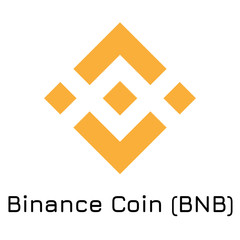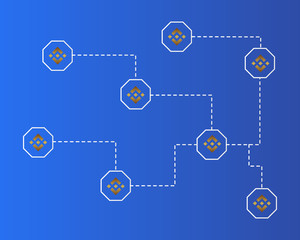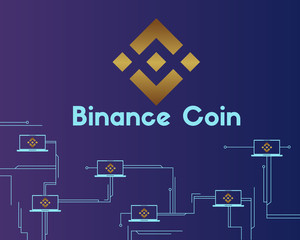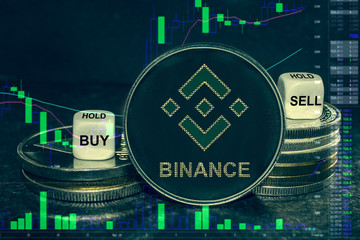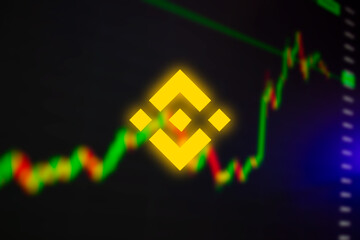Binance Coin (BNB) launched via an initial coin offering (ICO) that happened between June 26 and July 3, 2017. That was 11 days before the Binance Exchange opened trading. The coin was created to operate a native crypto asset. BNB is meant to provide an alternative way to pay for the fees that are charged to traders using the crypto exchange.
The issue price was 1 ETH for 2,700 BNB or 1 BTC for 20,000 BNB. Even though BNB launched through an ICO, the token does not offer users any claim on Binance profits. Moreover, it does not represent an investment in Binance.
Initially, it was issued as an ERC-20 token, operating on the Ethereum network with a cumulative supply of 200 million coins. 100 million BNBs were offered in the ICO. However, the current supply is lower as a result of periodic burning events where Binance destroys some of the BNB held in its treasury through a Coin Burning process.
These coins can be used to pay Binance’s 0.1% per trade fee and its withdrawal fee that is charged whenever the users move their cryptos from the crypto exchange and into a private wallet. The coin can also be traded for other cryptos.
Although originally based on the Ethereum network, the ERC-20 BNB tokens were then exchanged with BEP-2 BNB on a 1:1 ratio. BEP-2 BNB is Binance Chain’s native coin. Its mainnet launch was unveiled on April 18, 2019.
In September 2020, Binance unleashed a blockchain network that works in parallel with the Binance Chain and called it the Binance Smart Chain (BSC). This means that BNB is available in three different forms:
- BNB BEP-20 on the Binance Smart Chain.
- BNB BEP-2 on the Binance Chain.
- BNB ERC-20 on the Ethereum network.
How Binance Coin Works
Binance coin is an ethereum-based (ERC-20) token that will be used to trade cryptos and pay for fees on the Binance exchange. BNB tokens pay fees on the exchange with an incentive being that Binance gives a rebate as an incentive for 5 years of membership.
The exchange is different from the others since it transacts only in cryptos while the other exchanges deal in fiat currencies. The founder Changpeng Zhao’s vision for the BNB token was to help Binance exchange compete with others by providing solutions to many issues he identified in the crypto trading network.
All BNB tokens were created before the ICO and were sold out within 20 days, raising around $15 million. 35% of the raised funds went into building the Binance platform and performing system upgrades, 15% were reserved as emergency funds, and 50% were used for Binance branding and marketing.
As mentioned earlier, BNB launched as an Ethereum-based (ERC-20) token. But, it eventually moved to its local custom blockchain known as Binance Chain. Unlike the Ethereum blockchain, Binance Chain does not support any smart contracts.
Binance Chain uses the Tendermint byzantine-fault-tolerant (BFT) consensus mechanism. This network features many types of nodes: Witness nodes witness the consensus process and broadcast transactions to all other nodes; validator nodes choose the community members that vote to validate transactions on the network; and accelerator nodes that are owned by organizations and help in speeding up the transaction validation process.
After these blocks are created, the collected fees are distributed among all validators. The validator nodes vote to process transactions in the network to make up a segment of Binance Chain’s Tendermint byzantine-fault-tolerant (BFT) consensus mechanism. Transaction processing can speed up when users choose accelerator nodes that work concurrently with validator nodes.
BNB supply is capped at 200 million tokens. 100 million of these tokens were released to the general market during the ICO, 80million were assigned to the founding team while 20 million were allocated to the angel investors.
Binance said that it plans to burn up to 50% of its total supply to combat depreciation that is expected to happen with the annual decreasing discount. Hence, 100million tokens will be burned over time. The end goal of ‘The Burn’ is to ensure that the BNB token price is stable in the long term.
What Is The Binance Coin Used For?
BNB has many use cases within the Binance ecosystem and elsewhere. Thus, it is up to the user to determine how they want to use their tokens. For example, one can use BNB to pay for travel expenses, acquire virtual gifts, and a lot more.
Today, millions of BNB have been used for travel expenses, lending, payment of goods, rewards, creation of smart contracts, and other transactions. On the other hand, many other people use BNB to pay transaction fees. Nearly 2 million users have used Binance coin to pay for trading fees on the exchange. Hence, more than 40 million Binance coins have been used on at least 127 billion trades.
When trading cryptos on the Binance exchange, every trade incurs a standard fee of 0.1%. The trading fees are determined by the user’s monthly trading volume and BNB holdings. Users can pay the trading fees using the assets they are trading or they can use their Binance coin holdings.
Those who pay fees in BNB get a special discount. Thus, it is advisable to get BNB and pay fees using these tokens for those who trade a lot on Binance. Since the deduction for trading fees follows a particular schedule, traders need to check the current spot trading Fee Schedule. Notably, the Binance Futures platform is seen to follow a different Fee Schedule.
BNB also powers the Binance DEX on the Binance Chain and many other applications that are powered by the Binance Smart Chain (BSC). This means that one can use BNB outside the Binance trading platform too.
Over 180 digital assets have been issued on BSC and millions of users have used a Binance coin for utility purposes in connection with the Binance Smart Chain.
Most purchases of the Binance coins happen in the secondary market. It means that one can buy and sell a Binance coin on Binance.com and other crypto platforms.
Binance Coin Prices Are Exploding
In the first quarter of 2021, the Binance Coin has been surging with a massive uptick in transaction volume. The coin now appears to be closing in on Ethereum (ETH) in the market capitalization charts.
As of April 13, 2021, the Binance Coin is valued at $87 billion at the price of nearly $600. Ethereum is hovering above $240 billion which is 2.8 fold bigger than the market cap of the Binance Coin.
Notably, the technical momentum of BNB has been quite strong and at some point, it exceeded BTC/USDT pair’s volume on Binance bearing in mind that Tether (USDT) is the biggest stablecoin globally. Furthermore, the BTC/USDT pair ranks among the most liquid trading pairs in the crypto market.
The Binance Coin has been surging due to:
- The gap between Binance Smart Chain and Ethereum projects
- Growing popularity and preference of the Binance Smart Chain
- Strong technical momentum
Recently, the total transaction volume on the BSC has tripled the total amount of volume recorded on the Ethereum blockchain. The usage of the Binance smart Chain has been growing in Southeast Asia, according to data published by Coin98, the biggest venture capital firm in Vietnam. Coin98 is currently developing a decentralized finance (DeFi) ecosystem targeting the Asian market.
The price of BNB was considerably lower than Ethereum until late March 2021. The discrepancy that exists between Binance Coin and ETH might have made BNB a major investment option.
There is also an increasing gap in valuations between the Ethereum DeFi network and Binance Smart Chain. That scenario is thought to have created a huge demand for the BSC projects. In turn, the value of the Binance Coin surged rapidly while Ether has remained relatively stable above the $2,000 mark. “Wu Blockchain,” a reporter who covers cryptocurrency news in China explained:
“BNB broke through an astonishing $600, but Ethereum’s Fees fell to its lowest point in a month. Although the transaction volume of BSC is 3x that of Ethereum, the two are not in a competitive relationship. The top 10 addresses of BNB hold more than 88%, and Eth is 20%. The future of Ethereum depends on the upgrade of EIP-1559 and 2.0. The only two things Binance needs to worry about are the government suppression and hackers.”
Traders forecast that the Binance Coin will undergo another explosive rally in the short term in case it manages to break out against Bitcoin. Kaleo, another pseudonymous crypto trader, said:
“$BNB breaking above this level on the $BTC pair could lead to the type of explosive momentum needed to actually close in on $1,000.”
Is It Worth Investing In BNB In 2021?
Binance is undisputedly one of the biggest crypto exchanges worldwide, and that has attracted many investors to the Binance Coin, its native token. The coin is an innovation that lets users get rewarded whenever they use it to pay transaction fees on the exchange. Its many uses away from the Binance platform also appear to have attracted more investors to the market, eventually pushing its prices exponentially higher.
It is easy to buy a Binance Coin. One needs to create an account using their email address and then confirm this email on the next step. Once account verification is done, one can use their account, deposit coins on Binance, and readily exchange their coins on the crypto exchange.
The Binance Coin has gained exponential value in the initial months of 2021 due to the Binance exchange platform. It is expected that the coin’s value will surge in the coming months. Even though it cannot replace Bitcoin, it is likely to be a major winner in 2021.
BNB is a good investment and one of the safest cryptos in the nascent digital currency world. With a market capitalization of over $87 billion, BNB appears to be a worthy investment in 2021. The coin’s market price has almost tripled within two months in the first quarter of the year.
All fundamentals and technical analysis show that the Binance Coin has more room to surge further. Proponents say that in the mid-term, BNB might take over the second spot from Ethereum (ETH) in the market capitalization list.

